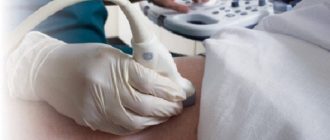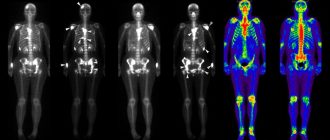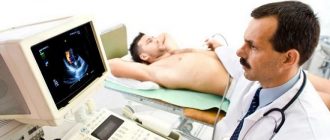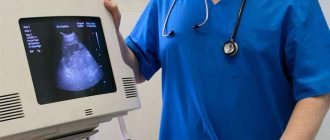Urinalysis for prostatitis is one of the primary diagnostic procedures, but its accuracy is not enough for a final diagnosis. This is necessary to identify the presence of pathologies in the genitourinary system for further laboratory and instrumental studies. Characteristic changes in the composition of urine in the presence of specific symptoms make it possible to diagnose the presence of the disease with a sufficient degree of confidence.
What do changes in appearance indicate?
The urethra passes through the prostate gland, so any changes in urine analysis during prostatitis can indicate ongoing processes in the genitourinary system. Often characteristic changes are visible even to the naked eye from the very appearance of the urine. The color of urine with prostatitis in men may differ from normal, the most common is:
- Pink - indicates the release of fresh blood along with urine; it can appear with various pathologies of the genitourinary system, including prostate cancer.
- Red - indicates the release of stagnant blood; it can appear with mechanical injuries, exacerbation of chronic prostatitis, the development of inflammation (pyelonephritis) or renal failure.
- Orange - occurs when the number of red blood cells increases, causing the urine to darken. It can occur both due to illness and as a result of taking certain medications or foods.
- White clots and threads are a sign of the development of purulent inflammation or an abscess. Most often, this symptom is accompanied by pain when urinating, fever and other signs.
- Flakes - manifests itself when protein gets into the urine and indicates a malfunction of the kidneys or bladder. It may be the first sign of cystitis, pyelonephritis or acute or purulent prostatitis.
- Sticky, foaming or cloudy urine with prostatitis indicates serious pathologies, as a result of which the density of the secreted fluid has changed. It may indicate both a chronic form of the disease and inflammation in other organs of the genitourinary system, including an oncological process.
Types of urine tests
It is possible to determine prostatitis using a urine test, but the accuracy of such a diagnosis is about 60%, which is not enough. Therefore, if the urine test results are positive, more complex diagnostic procedures are prescribed. In addition, changes in the composition or physical parameters of the secreted fluid can occur in a wide range of diseases.
To increase the accuracy of determining the disease, differential diagnosis is carried out, including 3 types of urine analysis:
- general;
- cytological;
- Batheriological.
Physical properties, daily fluid intake and associated symptoms are also studied. The combined information, along with some other instrumental and laboratory examinations (primarily analysis of prostate secretions), becomes sufficient to make an accurate diagnosis and prescribe therapy.
General analysis
Prostate secretion and general urine analysis are mandatory diagnostic procedures when identifying prostate pathologies. The main goal of this study is to study the physicochemical parameters of the liquid:
- appearance;
- color;
- smell;
- density;
- acidity;
- the number of leukocytes, red blood cells, protein and oxalates.
Cytological examination
Examines atypical cells in urine, which makes it possible to identify tumor diseases - BPH and cancer.
Bacteriological research
A urine culture tank for prostatitis allows you to determine the presence of the causative agent of inflammation if the disease is of infectious or fungal origin. This study makes it possible to study the degree of infection development and select the most effective antibiotic. The absence of microorganisms, but the presence of other characteristic symptoms indicates an abacterial form of prostatitis.
How material is taken
There are 2 main methods for collecting urine for research - 3 and 4 glass samples. More often a 4-glass dose is prescribed, because it gives more informative results. Its difference from the 3-cup bottle is that liquid is also taken after the release of prostatic secretion. The material is collected as follows:
- The morning discharge is collected, the first drops need to be flushed down the toilet, the middle portion is divided into 2 containers, the remaining portion is also not suitable for analysis.
- Next, the prostate secretion is collected into the 3rd container.
- After this, you also need to urinate, already in the 4th container.
For the accuracy of the study, it is important that the first portion of urine is collected after a night’s sleep, so you should not urinate before conducting it. You should also abstain from sexual intercourse the day before. In addition, you should thoroughly wash and dry the penis and surrounding areas of the body. A few days before the test, you should stop taking uroseptics and antibiotics, which the urologist will warn you about.
Decoding the results
A general urine test for prostatitis has the following indicators:
- Normal density is 1020-1022 g/l, deviations indicate pathologies.
- Acidity 5-7.
- Epithelial cells are normally absent or present in small quantities.
- Bilirubin and ketone bodies are normally absent.
- There are normally no blood spots.
- Protein in the urine indicates prostatitis or kidney pathology at a concentration above 0.033 g/l. Normally this indicator is 0.
- Red blood cells are present in numbers of more than one per field of view. The indicator may also indicate oncology. Normally it is 0.
- Leukocytes in the urine with prostatitis are in the amount of 4 or more units in the field of view.
- In the calculous form of inflammation, phosphates are also present in the urine.
A urine test after prostate massage may give incorrect results. In addition, it is influenced by many other factors, so most often the analysis is ordered again after some time. This increases the information content and allows for a more accurate diagnosis.



